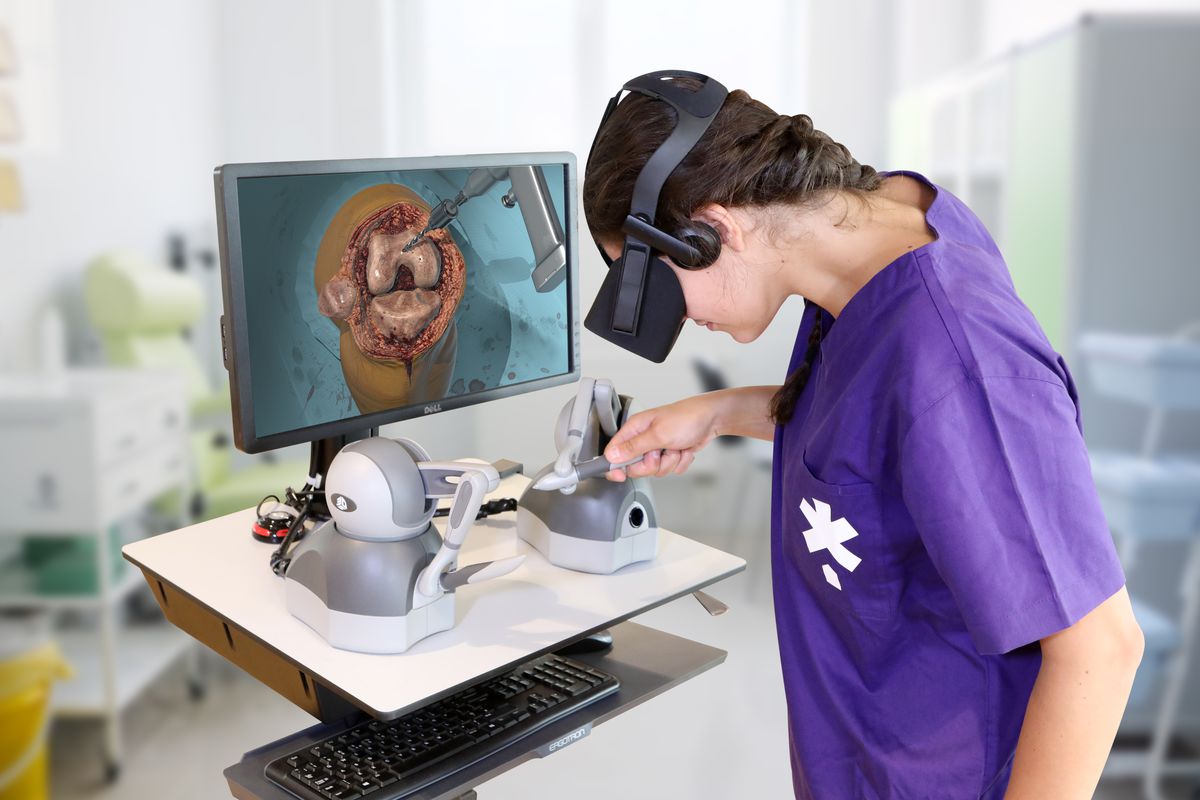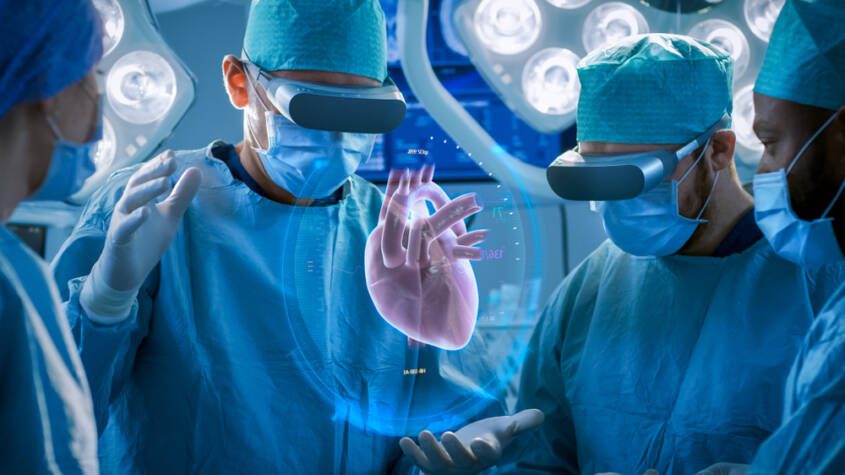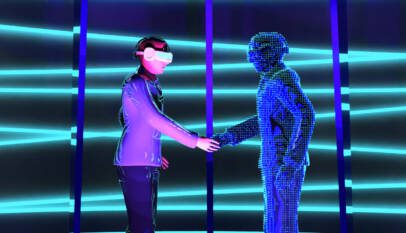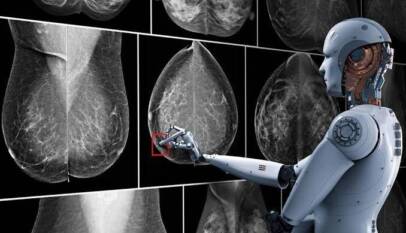Applications Of Augmented And Virtual Reality Technologies In Medicine
The software sector is growing at a rapid pace. Artificial intelligence augmented and virtual reality have increasingly gained in relevance, with the concept of the metaverse, also known as the virtual universe, becoming the focus of attention recently. I’ll discuss the differences between augmented and virtual reality technologies, as well as their applications in medicine, in this essay. It is a live or indirect physical appearance formed by enriching with sound, image, graphic, and GPS data. Augmented reality (AR) is a computer-generated depiction of the real-world environment and its contents. In a nutshell, this concept involves the computer’s altering and augmenting of reality. Virtual reality, on the other hand, refers to all the digital and physical aspects that give our five sense organs the impression of being in a virtual environment.
With the increasing application of these two notions in numerous industries, their utilization has expanded as well. The effects of these two technologies can be seen in a variety of domains, including the entertainment business, educational technology, retail, and tourism. The health sector is one of the most heavily invested areas in the deployment of these technologies. We’ve recently came across several startups that develop applications for the use of augmented and virtual reality in medicine. Let us look at a few of these businesses as examples:
– Fundamental VR: It provides surgeons with flight simulator-like training. It allows them to rehearse, practice, and perfect their surgical methods in a safe setting with tactile feedback provided by haptic features. Although the company has several virtual reality simulations, it also uses Microsoft’s HoloLens technology to provide Augmented Reality. It gives users the ability to deal with simulations.
– Karuna Laboratories: Virtual Reality simulations are used to treat chronic pain using evidence- based procedures. Patients can be treated at home or in a nearby clinic. The therapy program in a clinic might run anywhere from 4 to 12 weeks, depending on the patient’s specific needs.
– Oxford VR: Virtual Reality is used to treat symptoms of mental diseases and anxieties. For example, after just two hours of treatment, simulation of a fear of heights reduced this problem in patients by 68 percent on average.
– Augmedics: Known as xvision, he described it as “the first augmented reality guidance system for surgery.” The technique includes a 3D image that allows surgeons to observe the patient’s anatomy through skin and tissue, much like an x-ray. When surgeons used a virtual reality headset to put spinal screws into cadavers, the accuracy rate was 98.9%.
– SentiAR: Creates a holographic depiction of the patient’s anatomy using Medical Augmented Reality. During interventional treatments such as the treatment of cardiac arrhythmias in a catheter lab, this picture hovers over the patient.
– Vicarius Surgial: Minimally invasive operations can be conducted by integrating Virtual Reality with a surgical robot.
– Touch Surgery: Students can access more than 200 Virtual Reality surgery simulations and films in 17 specialties from anyplace with an internet connection.

With each passing day, the interaction between augmented and virtual reality technology and medical science takes on a new level. The effects of these technologies can be seen in a variety of settings, from medical student instructional gadgets to simultaneous surgeries. As concepts based on virtual reality, such as Metaverse, penetrate our lives at a faster rate, it is apparent that these instances will grow and reach unprecedented heights. In the Metaverse universe, for example, these technologies will allow a doctor in Tokyo to operate on a patient in Istanbul without needing to be physically there. We’ve already heard the footsteps of technologies like augmented and virtual reality, which are preparing the medical profession for a new era. In the near future, applications created under the impact of these technologies will become crucial for healthcare practitioners.
Artificial Intelligence Based Voice Health Assistant: Albert Health
Chronic patients can live a simpler everyday life thanks to the Albert Health application,…















